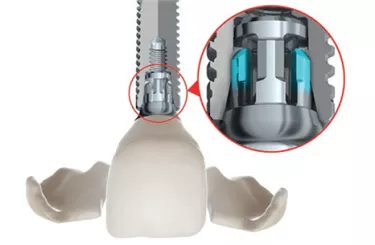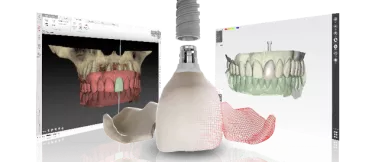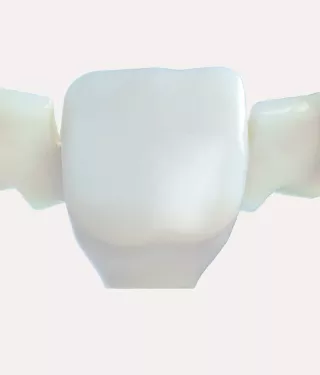
TempShell – Scan, plan and deliver!
TempShell offers a time-efficient protocol for providing screw-retained, individualized provisionals on the day of surgery.
The next generation of Nobel Biocare’s integrated treatment workflow has been developed to improve collaboration between treatment partners while increasing both treatment efficiency and acceptance.
Devised for partially edentulous patients, the new collaborative workflow from Nobel Biocare offers a time-efficient protocol for providing screw-retained, individualized provisionals on the day of surgery through the fully digital design and in-house production of TempShell temporary restorations.
Step-by-step
As with the current integrated workflow, the clinician takes a (CB)CT scan in line with his or her usual diagnostic procedures. Additionally, a dental scan of the intraoral situation is acquired from an intraoral or desktop scanner. The STL or PLY(color scan) file is then imported into NobelClinician.
This hard and soft tissue data can then be combined effortlessly using the SmartFusion function in the software to provide a detailed visualization of the anatomical situation.
The planning process is made even more efficient by the introduction of the SmartSetup feature. This automatically creates virtual teeth by analyzing the patient’s remaining dentition. The clinician can subsequently diagnose and plan the implant treatment based on the underlying anatomy (hard tissue), the intraoral tissue, and the prosthethic information.
The final treatment plan can then be used to order a surgical template for pilot-drilling or fully guided implant placement.
In the new collaborative workflow, the clinician is able to share the NobelClinician treatment plan via NobelConnect with a partner laboratory that is using the DTX Studio design software.* The lab uses the information from the treatment plan to finalize the TempShell (provisional) design and fabricate it in-house. Afterwards, it is sent directly to the clinician.
Because the TempShell is produced according to the digital treatment plan, the technician can be confident that it meets the needs of both the clinician and the patient.
On the day of surgery, the clinician places the implants and the temporary abutments, and then makes any needed modifications to the TempShell chairside to form a passive-fitting, screw-retained provisional.
This updated workflow is designed not only to engender more time-efficient work and closer collaboration between the clinician and the lab, but also to reduce time-to-teeth for patients, making it possible for them to leave the dental office with a personalized, screw-retained provisional restoration on the day of surgery.
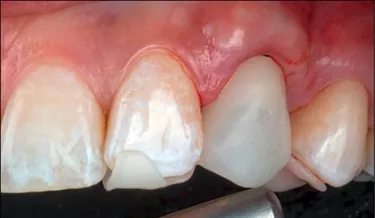
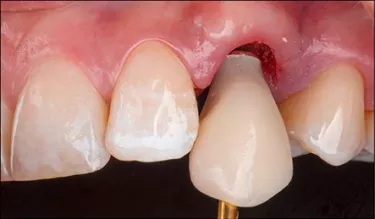
TempShell wings ensure correct positioning of the TempShell at try-in and are subsequently removed chairside before placement.
